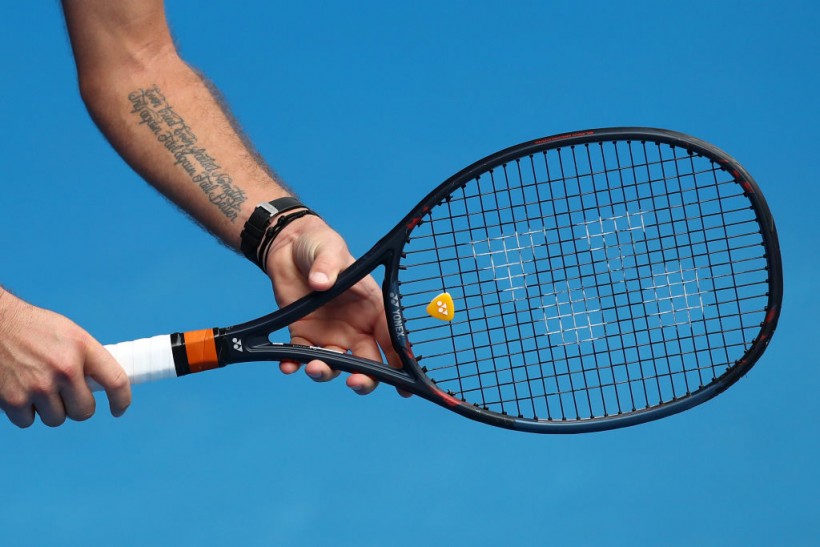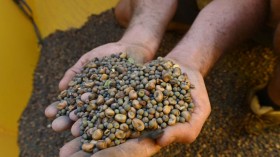(Photo : Photo by Cameron Spencer/Getty Images)
You're heading home and a shivering cool wind blows throughout the neighborhood. Your forearm follicles shrivel up, and small pimples develop. This is a frequent bodily reflex when individuals feel chilly, terrified, or excited. But why are folks getting goosebumps?
Why do Humans Experience Goosebumps?
Even as there are a few potential interpretations for why body systems can be ripe pickings for goosebumps, which is a term derived from the ridged epidermis of a plucked bird - experts do know the mechanics that induces goosebumps to appear, Live Science reported.
There are hundreds of microscopic tendons dubbed as arrector pili beneath the epidermis, in each follicle on the body. Nerves looped through arrector pili send electronic messages throughout the body, telling them when to procure. When this occurs, the muscles' connected hairs raise, establishing a goosebump.
As per a 2014 article published in the journal Folia Primatologica, the capacity to increase public hair helps a lot for the majority of long-haired animals (Piloerection is also experienced by birds and reptiles, but the reaction lifts their feathers or scales.)
Piloerection is the process by which fur and feathered propping up and form a dense protective layer to defend them from the weather.
When hairy creatures are frightened, their additional fur helps them appear bigger to prospective attackers, according to Thomas Schubert, a psychologist at Norway's University of Oslo who has co-authored research on the association among goosebumps and feelings.
Consider what happens if your dog notices a mail carrier approaching the entrance. For sure, your puppy starts barking, but their hackles - the strands on the rear of their neck - may shrivel up.
Several other animal taxa, notably chimps as per Harvard Health Publishing which is one of humans' nearest earliest ancestors - show this same sensitivity to anxiety or aggressiveness. However, since anatomical and physiological hairs is scant, fluffing up provides little benefit.
As noted by Amy Paller, director of dermatologists at Northwestern University's Feinberg School of Medicine, it doesn't do anything to safeguard the people. Furthermore, experts assume that piloerection was involved in the exact first mammal because it is found in practically all primates, as well as many birds and reptiles.
Also read: Two People Injured After a Shark Attack off Long Island
Origin of Goosebumps
It was handed down to mammals, which appeared approximately 66 million years ago, right there when the dinosaurs diverged, and eventually to humans, regardless of the reality that it doesn't do anything for us. It's an illustration of a withered feature, which was advantageous in our long-haired forebears but never went away.
The tailbone and the appendices are two further instances of vestigial characteristics in humans. Living beings have a heritable component that no longer serve any purpose, it's just a remnant of our mammalian forefathers.
Moreover, folks don't get goosebumps just because its windy or or when feeling terrified. We do get them when we have intense feelings, such as when our kids stroll throughout the juncture at completion or when we recite a moving poetry.
Schubert believes that response happens when our nervous system activates. Consider how your heart pounds when you're scared or enthusiastic; in both circumstances, your nervous process is triggered.
Conversely, the neurons that wrap over those arrector pili tendons don't care if you're terrified, thrilled, or agitated; they're just getting a stream of chemical impulses from the cortex.
One probable reason is that goosebumps encourage the creation of new hair. A group of researchers collected skin biopsies from mice in 2020 and severed the neurons that coil around the arrector pili.
Their findings, issue of the journal Cell, revealed that hair follicle stem cells, which make hairline, were slower to trigger and that hair growth grew more slowly.
Related article: Verbal Insults are Equivalent to a 'Mini Slap in the Face' Regardless of Context: New Study
© 2024 NatureWorldNews.com All rights reserved. Do not reproduce without permission.






